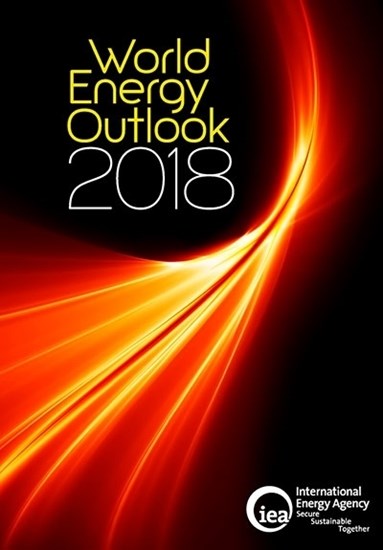The International Energy Agency (IEA) released its World Energy Outlook (WEO) 2018 which indicates that "the world is still a long way from meeting its environmental objectives" and the gap, between announced climate policies and targets and the goal of holding global average temperatures to well below 2 degrees, "remains huge"; a message that only adds weight to the climate risk management imperative for business.
The WEO 2018 also updates last years' analysis to show what the latest technology trends and policy announcements mean for the energy sector to 2040. This year it also provides a special focus on Australia’s experience with electricity network reliability and potential as an exporter of hydrogen.
In this article, Energetics draws out the features of the report particularly where they relate to Australia.
Insights and trends through to 2040
Each year, IEA presents several projections through to 2040. This is based on various climate change policy assumptions, including those enshrined in the Paris Climate Agreement. The WEO 2018 provides important context for the scale of change required and implications for energy markets in Australia, particularly as global climate change policy will be further refined and hopefully agreed upon in Poland during the COP 24 Climate Change Conference in December 2018.
The New Policies Scenario (NPS) provides the best measurement of where today’s policy frameworks, climate change policy targets and technology trends might take the energy sector to 2040. It does not focus on holding global average temperature to well below 2 degrees but puts forward projections based announced policy ambitions.
The following points highlight the current rate of change in energy markets and projections under the NPS, with specific reference to Australia where possible:
- Energy costs: The dynamic has changed this year with further falls in costs of solar PV and wind while oil prices climbed above 80 US dollars per barrel.
- Energy supply: There are differences at a global and local scale with more connections to Asia for oil and gas trade, contrasted by greater sourcing of energy at a local level through cost-effective renewables enabled by distributed and community-based ownership.
- Solar PV is expected have greater global capacity than wind before 2025; will surpass hydropower around 2030 and exceed coal capacity before 2040.
- Natural gas is expected to overtake coal in 2030 to become the second-largest fuel in the global energy mix with trade in LNG more than doubling. For Australia, natural gas production is likely to almost double through an annual average increase of 3% (constant annual growth rate) from 2017 to 2040. This is almost entirely driven by exports with their share of production reaching 71% in 2040 (up from 57% in 2017).
- Hydrogen: Japan is looking closely at the possibility of expanding the role of zero-emissions hydrogen with the WEO 2018 touting Australia’s potential to produce hydrogen in 2040 equivalent to 100 million tonnes of oil equivalent (Mtoe) or hydrogen or 3% of global gas consumption. This is based on suitable locations within 50 km of the coastline (to reduce inland transport) with a potential cost to manufacture less than $3 per kilogram ($25 per GJ). The least expensive way to transport hydrogen from Australia is identified as being in the form of ammonia rather than as liquid hydrogen.
- Coal: The outlook for international thermal coal trade is uncertain under NPS, but Asian markets are more likely to support demand for low-cost metallurgical coal in a growing international metallurgical coal market. Australia is the only export-oriented country projected to ramp up coal production over the period to 2040 and is expected to surpass US production by the late-2020s.
- Electrification: The opportunity for electrification is also increasing with the decarbonisation of the power sector and expansion of battery storage for meeting mobile or remote demand. At present, electricity accounts for just under 20% of global final consumption but with further applications in mobility and heating this could be pushed to over 30% in 2040. Noting that 65% of final energy use could technically be met by electricity.
- Network reliability: South Australia is identified as one of a handful of regions to achieve high annual shares of variable renewable generation (at almost 50% and equivalent with Denmark) "requiring advanced technologies to ensure reliability". In Australia, the gap between electricity sales revenue and total generation costs has been narrowing. The market has also seen very high prices at times when extra capacity is limited. These "scarcity prices" have covered a rising portion of total costs of generation, more than offsetting the downward pressure on wholesale market prices from increasing amounts of variable renewables. As the occurrence of scarcity prices increases, it is likely to provide a signal for new investment in energy storage capacity to capture very high prices in the future. Demand-side response may also be able to benefit from scarcity pricing.
Overall, it is clear that while the task of transforming the world’s energy markets is significant, rapid growth in renewable energy generation will see their share increase from the current level of 25% to over 40% globally by 2040. This global momentum, built upon both the need to achieve climate targets and the cost effectiveness of renewable energy sources, will in turn drive Australia’s clean energy transformation.
The outlook also suggests that Australia will see greater demand for our gas exports, although the IEA points to the need for the industry to pursue cost effective ways to cut indirect emissions. In the future too, there is potential export demand for Australian hydrogen supported by domestic renewable energy generation.
For more information you can check out the IEA’s executive summary or purchase the full report to view online: World energy outlook 2018 (IEA, November 2018)







